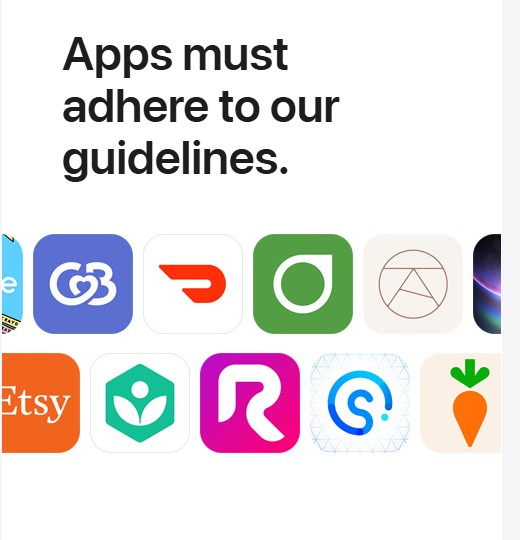The digital world was thrown into chaos today as a massive, multi-service outage struck the very heart of the Apple Store ecosystem. This is not a minor glitch or a localized incident; it is a significant, system-wide failure that has brought key components of the digital Apple Store to a grinding halt. Millions of users across every continent suddenly found themselves locked out of essential services, highlighting our profound dependency on a platform we often take for granted.
Confirmed by Apple’s own System Status page and corroborated by an avalanche of user reports on Downdetector, this incident exposes the underlying fragility of our hyper-connected digital lives. When the sophisticated infrastructure supporting the Apple Store fails, it creates a domino effect, disrupting everything from entertainment and communication to business and productivity. For a company renowned for its seamless, integrated ecosystem, a failure of this magnitude sends shockwaves through the entire technology industry, raising urgent questions about redundancy, transparency, and the true resilience of cloud-based services.
This comprehensive, live-updating report from Alienweb.in is your definitive source for the latest information on this evolving Apple Store crisis. We are dissecting this breaking story from every conceivable angle. In the sections below, you will find a minute-by-minute analysis of the affected services, firsthand accounts of the real-world impact on users and developers, Apple’s official communication strategy, and a critical, step-by-step troubleshooting guide to help you navigate this digital blackout.
The Anatomy of the Outage: A Detailed Look at the Services Affected
The outage impacting the Apple Store is particularly alarming due to its cascading nature. It is not a single-point failure but a systemic event that has impacted several core services simultaneously. This breadth of disruption suggests an issue with a fundamental backend system, such as identity management or a core content delivery network, that multiple services within the Apple Store umbrella rely upon.
App Store: The Digital Gateway Grinds to a Halt
Perhaps the most critical failure from a functional standpoint is the complete outage affecting the App Store, the primary gateway and distribution platform for the entire Apple Store ecosystem. This is far more than an inconvenience; it is a direct block to the core functionality of every iPhone and iPad, severing users from the essential applications they use daily.
- The Scale of the Failure: Downdetector recorded a staggering spike, with thousands of outage reports for the App Store pouring in from North America, Europe, Asia, and Australia within a very short timeframe. This global concentration of reports confirms that the issue is not regional but central to the Apple Store infrastructure itself.
- The Real-World Consequences for Users:
- Frozen Digital Life: Users are completely unable to download new applications or games from the Apple Store, leaving them stranded if they need a critical new app for work or personal use.
- Security Vulnerabilities: Perhaps more dangerously, critical security updates and feature patches for existing applications cannot be installed. This leaves devices and personal data potentially exposed to known vulnerabilities that have otherwise been patched.
- Economic Standstill: All in-app purchases and subscriptions processed through the Apple Store are failing. This not only frustrates users but also instantly cuts off a vital revenue stream for the millions of developers who depend on the Apple Store for their livelihood.
- Broken Discovery: Even basic navigation, search, and browsing within the digital Apple Store interface are malfunctioning, making it impossible to explore new apps or read reviews.
Apple TV+ and Apple Music: The Entertainment Pillars Crumble
The outage has delivered a parallel blow to Apple’s entertainment services, which are integral components of the modern Apple Store experience.
Apple TV+, the company’s flagship streaming service and a key player in the “services” revenue segment, has gone dark. Subscribers are reporting a complete inability to stream any content. The experience is universally frustrating: perpetual loading screens, error messages stating “This content is unavailable,” or apps that simply crash upon launch. This global failure indicates a catastrophic breakdown in the content delivery or digital rights management servers that the Apple Store uses to authenticate and serve video to subscribers.
Apple Music, the soundtrack to daily life for millions, has suffered a similar fate. Subscribers cannot play songs, access their meticulously curated playlists, or use the service’s radio features. The app may open, but it fails to load library content or stream any audio, often displaying a generic “Cannot Connect” alert. The failure is consistent across the entire device lineup—iPhone, iPad, Mac, and HomePod—pointing to a core backend API or licensing server failure within the Apple Store architecture.
iCloud Storage Upgrades: The Silent, Significant Failure
Adding a deeper layer to the crisis, Apple has officially confirmed on its system status page that it is “investigating issues affecting iCloud Storage Upgrades.” While this may seem like a niche problem compared to the entertainment blackout, it is a silent killer for many users’ workflows.
What this means is that users who have run out of iCloud space and need to upgrade their plan to back up a new device, free up local storage on their iPhone, or simply ensure their photo library continues to sync, are completely unable to do so. Their upgrade requests, routed through the Apple Store payment and authentication system, are timing out or failing entirely. This directly impacts a key, high-margin revenue stream for Apple and creates a tangible roadblock for users at a critical moment.
Inside the Storm: The Human Impact of the Apple Store Blackout
Beyond the cold, technical metrics on a status page, the true story of this outage is told through the lived experiences of millions of frustrated users. The digital landscape has become a sounding board for global aggravation.
A Torrent of User Anger on Social Media
Platforms like Twitter (X), Reddit, and Facebook are flooded with complaints and confused queries. The common themes are a mixture of confusion, significant inconvenience, and a growing sense of annoyance. Users report that their carefully planned evening entertainment routines have been destroyed. Gym-goers found themselves without their workout playlists. Professionals were unable to download critical apps before meetings. The hashtag #AppleDown quickly began trending in dozens of countries, creating a rare, unified global community of affected individuals, all sharing in the collective frustration of a broken Apple Store ecosystem.
Downdetector: The Unofficial Pulse of the Internet’s Frustration
Downdetector, the independent outage monitoring service, became the most reliable real-time source for gauging the true scale of the problem. Its live-outage map was illuminated with reports from every inhabited continent, providing a stark visual representation of the global reach of this Apple Store service failure. The sharp, near-vertical spike in reports, all concentrated around the same universal time, confirms this was a sudden, catastrophic “break” within Apple’s infrastructure, not a slow degradation or rolling outage.
Apple’s Response: Decoding the Official Communication
In the face of this growing, global crisis, how is a tech giant like Apple communicating with its massive user base? The answer, for many, has been frustratingly limited.
The Apple System Status Page: A Cryptic Bulletin Board
The primary channel for official information remains the Apple System Status page. For those familiar with it, this page is often a lesson in corporate crypticness. As of the latest update, the page displays a list of affected services—including the Apple Store—with a yellow or orange “Outage” or “Issue” icon next to them. The accompanying text typically states that Apple is “investigating” the issues, a standard term in IT incident management that indicates they have confirmed a problem exists but do not yet have a identified root cause or, crucially, an Estimated Time to Resolution (ETR).
The Silence is Deafening
For the average user, this lack of detailed public statement or an ETA for a fix is a significant point of contention. In an age of instant communication via social media, the silence from Apple’s official press channels or its prominent CEO is deafening. This communication vacuum forces users to rely on third-party sites and social media speculation for aggregated information, often amplifying frustration and uncertainty about the Apple Store‘s restoration.
A Comprehensive Troubleshooting Guide for Affected Users
Before you resort to drastic measures like resetting all your network settings or restoring your device, it is crucial to follow a logical, step-by-step diagnostic process. Remember, the problem is almost certainly on Apple’s end, but it is always wise to rule out local factors.
Step 1: Confirm the Widespread Nature of the Outage
Your first and most important action should always be to check the official source. Visit Apple’s System Status page. If you see colored (yellow or orange) icons next to the Apple Store services you’re having trouble with, you have confirmed a widespread outage. Your most effective course of action at this point is patience. No amount of troubleshooting on your end will resolve a server-side issue.
Step 2: Perform Basic Device and Network Checks
If you want to be absolutely certain the issue isn’t local, you can perform these quick, non-destructive checks:
- Verify Your Internet Connection: Ensure your Wi-Fi or cellular data is working correctly by loading other websites or using apps that do not rely on the Apple Store for authentication (e.g., a web browser).
- The Universal Reboot: The classic “turn it off and on again” remains a powerful tool. A simple restart of your iPhone, iPad, or Mac can resolve many temporary glitches by clearing cached authentication data and corrupted temporary files related to the Apple Store.
- Check for Software Updates: Very occasionally, a pending iOS, iPadOS, or macOS update can cause conflicts with services. Navigate to Settings > General > Software Update to check.
- Refresh Your Authentication: For services like Apple Music or the App Store, try signing out of your Apple ID and then signing back in. This forces your device to fetch a fresh authentication token from Apple’s servers, which can sometimes bypass a stuck state.
Step 3: Advanced Diagnostic Steps (For Power Users)
- Network Isolation Test: Try connecting your device to a completely different network. For example, if you’re on Wi-Fi, disable it and use your cellular data plan, or vice-versa. If the service starts working on one network but not the other, the problem may be related to your primary internet provider’s routing to Apple’s servers.
- Cross-Device Verification: If you have access to another Apple device (e.g., a Mac if your iPhone is failing), try accessing the same service there. If the Apple Store service is also down on the second device, it further confirms a widespread outage.
The Ripple Effect: The Broader Impact Beyond the End-User
The consequences of this Apple Store outage extend far beyond the frustration of an individual unable to stream a movie or download a game. The economic and operational ripple effects are substantial.
A Developer’s Worst Nightmare: App Store Connect
For the vast community of iOS and macOS app developers, this Apple Store outage is a direct and immediate threat to their business operations. The App Store Connect portal, the web-based interface developers use to manage their apps, analyze performance metrics, and view financial reports, is also experiencing severe issues.
When this portal is impaired, developers are effectively flying blind. They cannot:
- Monitor real-time app downloads and sales figures from the Apple Store.
- Submit critical bug fixes or feature updates for Apple’s review and subsequent publication on the Apple Store.
- Manage or respond to user reviews, which are vital for app reputation.
- Access detailed financial reports to reconcile their earnings.
This disruption halts their ability to operate, update, and optimize their business on the platform, leading to tangible financial losses and operational paralysis. The search query “Rows per page 25 1–25 of 43 apple app store” mentioned in source materials is a direct glimpse into this world—it represents a developer trying to access a paginated list of their app analytics within App Store Connect, only to find it non-functional.
Investor Jitters: Scrutinizing the Services Pillar
Whenever a corporation of Apple’s scale and market capitalization experiences a significant operational failure, the financial markets take notice. The immediate question among investors is how this reflects on the company’s stability and future earnings potential.
While a short-term, isolated Apple Store outage is unlikely to cause a major dip in AAPL stock price, it does raise subtle but important concerns. Apple has strategically pivoted in recent years to emphasize its high-margin Services division—which includes the Apple Store, Apple Music, Apple TV+, and iCloud—as a primary growth engine. Consistent or prolonged outages undermine the reliability of this very division. If users cannot depend on the services, subscriber growth could stall, and churn could increase, potentially eroding a key pillar of Apple’s long-term financial strategy. Investors will be watching Apple’s time-to-recovery and post-mortem analysis closely as a key metric of the company’s operational resilience.
Historical Context and The Future of Cloud Reliability
This incident is far from the first of its kind, but its scale serves as another stark reminder of the centralized nature of our modern digital world. As we enthusiastically entrust more of our personal data, professional work, and daily entertainment to the cloud, the impact of a single company’s infrastructure failure becomes exponentially greater.
- The Push for Redundancy: Events like this may push both users and companies to consider diversifying their service subscriptions. Relying on a single ecosystem, no matter how well-designed, carries an inherent risk. We may see a growing trend of users subscribing to multiple music or cloud storage services as a backup plan.
- The Demand for Transparency: There is a growing and entirely reasonable demand for tech giants to provide more transparent, real-time, and human-readable communication during crises. A static, cryptically-worded status page is increasingly seen as insufficient. Users expect proactive updates on social media, clear explanations of the problem’s cause, and realistic ETAs for restoration.
- The Pressure on Infrastructure: This outage underscores the immense, almost unimaginable pressure on the backend infrastructure that powers global services. It highlights the catastrophic domino effect that can occur when a single, critical component—be it an authentication server, a database cluster, or a network router—fails.
Conclusion: A Defining Moment for Digital Dependency
The widespread Apple Store outage, affecting everything from app downloads to music streaming, is more than a temporary inconvenience. It is a powerful wake-up call and a defining moment that illustrates the profound dependency we have developed on a handful of dominant tech corporations.
It demonstrates the inherent fragility of the digital services we now consider essential to modern life. For now, the only solution for millions is patience, as Apple’s world-class engineers work tirelessly to diagnose the root cause and restore full functionality to the Apple Store and its related services.
However, for the future, this event should spark a serious and sustained conversation about resilience, transparency, and the true cost of our centralized digital ecosystem. It prompts us to ask critical questions about what happens when the digital platforms we build our lives around suddenly disappear.
Alienweb.in is committed to bringing you the latest on this developing story. We will update this article continuously with new information, official statements from Apple, and independent confirmation of full service restoration. Bookmark this page and refresh regularly for the most current and comprehensive updates.



